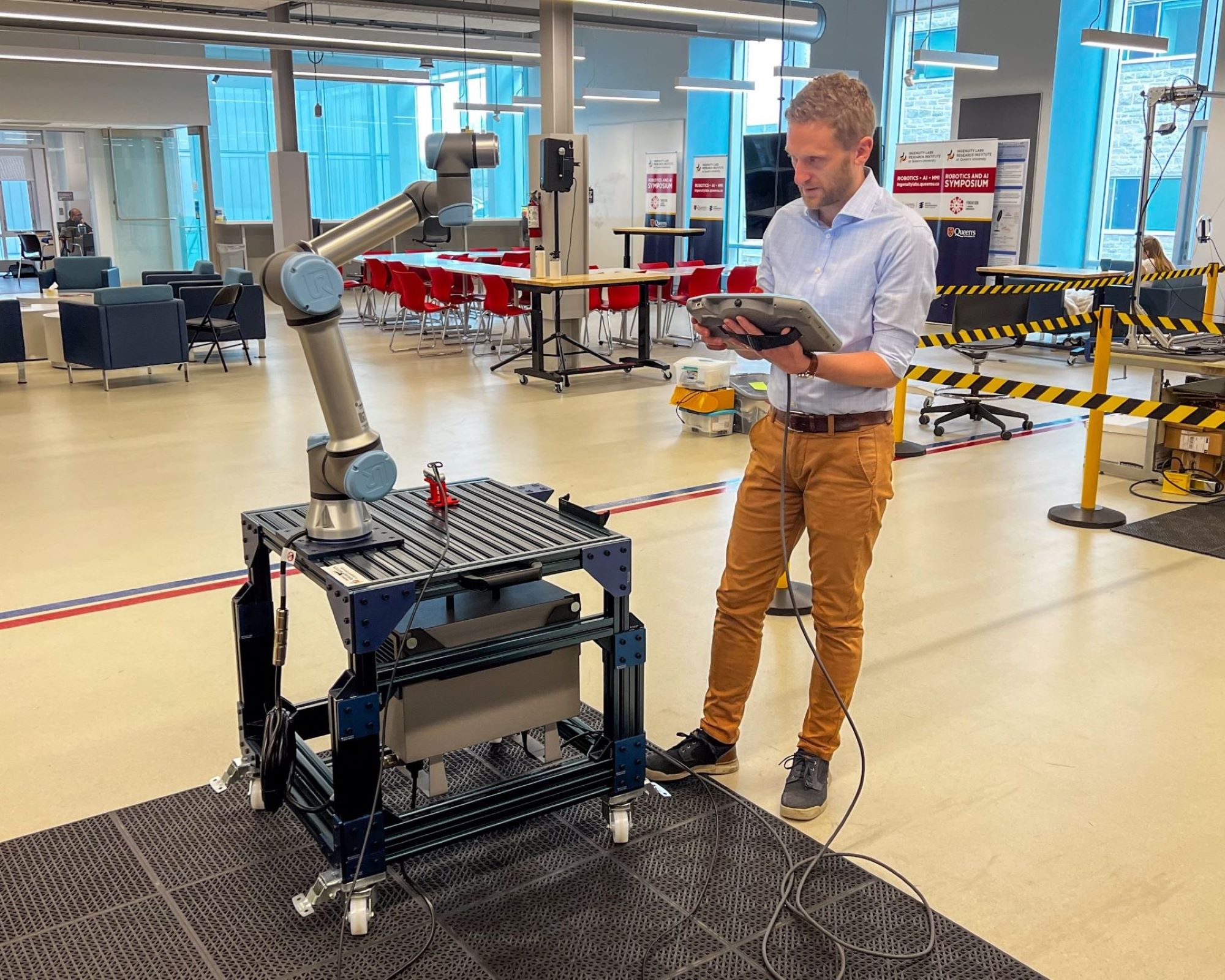
If you need to get from one building on campus to another, you might consult a map or ask a friend, determine the ideal route, and find your way over: no big deal.
Motion planning is more complex for a robot. Researchers like Jonathan Gammell are leveraging Kingston’s natural surroundings to study one of the toughest challenges in robotics: motion planning.
“Boats are an interesting problem in robotics because they have a lot of constraints. A boat can’t suddenly move sideways on its own,” he says. “These constraints make motion planning harder because, for instance, a sailboat depends on the flow of water over the rudder to be able to turn. Being right next to Lake Ontario provides us with the resources necessary to test motion planning for unmanned surface vessels, essentially drones on water.”
To that end, Gammell, an Assistant Professor in the Department of Electrical and Computer Engineering, and the Ingenuity Labs Research Institute are outfitting a 16-foot sailboat as part of a research program that will help them explore and better understand some of the challenges robots face with solving motion planning problems.
“We judge robot, and how well it understands the world, based on what it decides to do with the information it has, no matter how good all the various parts of the other system are,” he says. “My research focuses on both how a robot understands and measures the dynamic world around us, and how the robot makes plans to move.”
By the time the robotic boat hits the waters in spring 2025, it will be equipped with sensors to help measure the marine environment and objects within Lake Ontario. These sensors will capture data such as wind direction and speed, water current and temperature, and the boat’s orientation. Additional sensors such as radar will be added as part of future research, and the goal will be to sail even during inclement weather in order to further the research. Fellow boaters will be reassured to note the vessel will always be manned and include an Automatic Identification System (AIS), and Gammell says his lab will work with the Canadian Coast Guard and other stakeholders to keep fellow boaters safe.
“The data we collect will initially be used to develop systems to sail safely, efficiently, and effectively across various sea and wind conditions,” says Gammell. “We're also hoping to work with partners in other disciplines to carry instruments to collect data for scientific purposes, such as pollution, water quality, and the health of fish and other aquatic life.”
Of course, his findings will help more than just the robotic sailing enthusiasts of the world and those interested in studying Lake Ontario. The research will examine core problems of robotic motion planning and motion estimation and advance robotics across application domains, including one of Gammell’s other passions: robots in space.
Gammell completed graduate studies in robotics at the University of Toronto Institute for Aerospace Studies before becoming a junior faculty member at the University of Oxford.
“Robotics is a fun domain because it’s a systems domain,” he says. “You have to work on how things interact together. From an engineering perspective, you need at least a working knowledge of mechanical engineering concepts like dynamics and motors, as well as electrical engineering concepts like power and signals, and software aspects, and all these various disciplines. We are also fortunate to work in a field where we can complete robotics research for the sake of the robotics research while also getting to work on robotics as a tool for someone else to do their research, which means you get to help out others and learn about their field, too.”
Gammell joined Smith Engineering and Ingenuity Labs in October 2023, valuing the opportunity to return to Canada and join the Queen’s community. Since arriving, he has taught a first-year programming course and developed a graduate course on motion and path planning. He is teaching a second-year design course and is involved in fourth-year capstone projects for mechatronics and robotics engineering students.
On the research side, he is working with graduate students on motion planning, multimotion estimation, and event cameras and is working on new research projects this fall with graduate students separately studying autonomous aerial drones for search and rescue and building inspections.
